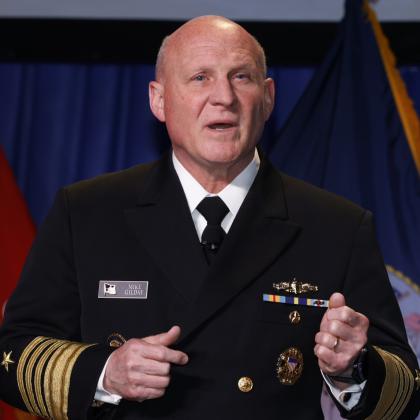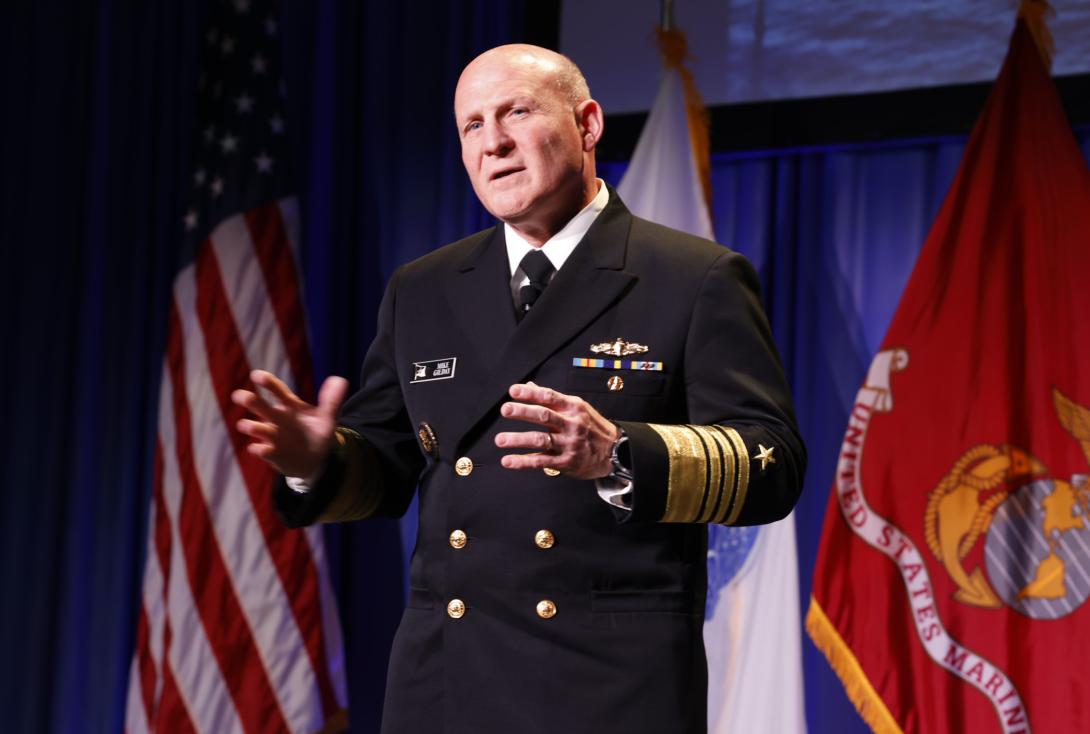Improving Unmanned Capabilities Ensures Effective Deterrence
While the intent of competition with a pacing rival like China may be to improve forces, the U.S. Navy needs to strike a balance between innovation and prudence.
“It’s always good to have someone breathing down your neck. It puts pressure on you,” said Adm. Michael Gilday, chief of naval operations, U.S. Navy, during his WEST 2023 keynote in San Diego on Thursday.
Adm. Gilday explained that as the United States disengaged from land conflicts in the Middle East, the Navy recovered relevance and modernization to become a credible deterrent creating new capabilities.
“For the last 20 years, the nation has been focused on ground wars in Iraq and Afghanistan, and during that time, strategic investments in the Navy, understandably, have taken a backseat. Not anymore, and there’s consensus in Capitol Hill that the fleet needs to be bigger,” Adm. Gilday said.
As change comes at breakneck speed, his concern is efficiency.
“Revolutionary change is really hard, and we've learned, sometimes the hard way, when we move too fast, we make big mistakes,” Adm. Gilday told the audience.
The Navy is involved in Project Overmatch, a command-and-control initiative that also combines unmanned and manned fleets in the air, surface and under the water.
Last year, a large underwater drone was launched in the Western Pacific, and four more are expected to follow, according to Adm. Gilday, and these devices can lay mines.
In 2025, unmanned systems will also include tanker planes that extend the range of fighters by 500 miles.
These milestones will mark a new composition of naval aviation forces. “The manned and unmanned teaming ratio in the 2030s and early 2040s will probably be 60% unmanned to 40% manned,” Adm. Gilday said. For surface vessels, the commander expects to have 40% of the fleet unmanned by the early 2040s.

Revolutionary change is really hard, and we've learned sometimes the hard way, when we move too fast, we make big mistakes.
The Navy already operates 100 unmanned surface information vessels in the Gulf of Aden, and the experience obtained from the missions is guiding the adoption of these systems in the rest of the force, according to Adm. Gilday.
Still, one advantage goes beyond weapons.
“I believe that people and not things are our primary competitive advantage in this competition with the [People’s Republic of China],” Adm. Gilday relayed.
In speaking about the path to follow for future decades, the admiral suggested this is “what we really need to stay true to in order to deliver every single day to feel the most capable, lethal, ready force that we can.”




Comments